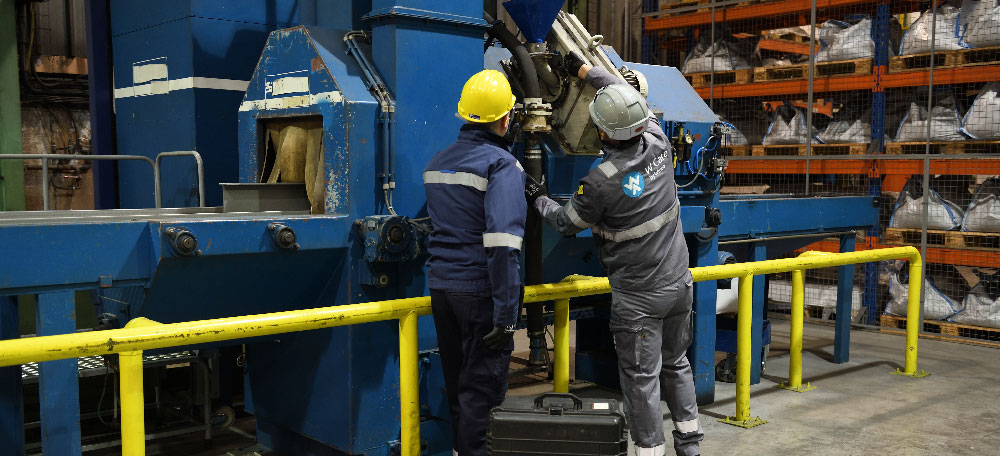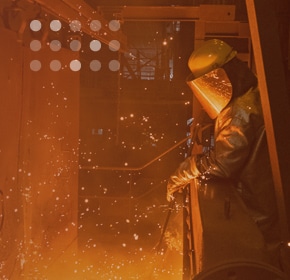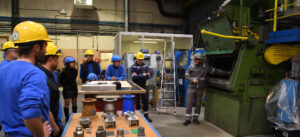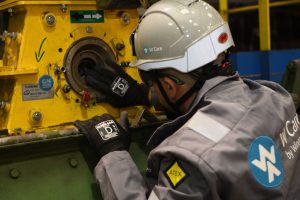Winoa’s Commitment to Quality: Understanding ISO Certifications in Abrasive Manufacturing
Understanding ISO standards is not just a matter of compliance; it’s also a driver of quality and efficiency in the industry. At Winoa, we have incorporated these standards not only to meet regulatory requirements but also to optimize our processes and ensure a high level of quality for our customers.
Discover how the application of these globally recognized standards aligns with a strategy for compliance, continuous improvement, and assurance of quality in use… simply a mark of confidence.

ISO Standards at Winoa
Manufacturing Standards for Abrasives are primarily in place to ensure the quality, safety, and performance of abrasive products used in various industries and applications, including shot blasting. As a global leader in the manufacture of steel abrasives and surface treatment tools and services, Winoa is committed to continuous improvement through several standards.
ISO 9001: Standard for Quality Management Systems
Certainly the most widely recognized and implemented standard worldwide in terms of quality management, ISO 9001 establishes a framework for the effective implementation of a quality management system regardless of the industry.
Key elements of ISO 9001 include:
- Defining the quality policy,
- Planning,
- Process control,
- Measurement,
- Performance monitoring,
- Non-conformance management,
- Continuous improvement.
The ISO 9001 standard has the advantage of emphasizing the establishment of robust and efficient processes, which are particularly beneficial in industrial environments for risk management and continuous improvement. This includes:
- Improving customer satisfaction,
- Seeking cost reduction,
- Increasing operational efficiency,
- Managing risks more effectively,
- Achieving a stronger competitive position in the market.
Preventing risks is a commitment from Winoa’s employees

ISO 45001: Standard for Occupational Health and Safety Management Systems
ISO 45001 provides a framework to help establish and implement a more efficient occupational health and safety management system, primarily for employees.
Its purpose is to address the identification, assessment, and control of risks, promoting a safer and healthier working environment.
ISO 45001 offers multiple advantages, especially in complex environments like shot blasting sites :
- Reduction in workplace accidents and incidents,
- Compliance with health and safety regulations,
- Improved productivity,
- Reduction in costs related to workplace accidents,
- Enhanced risk management.
Winoa’s goal is to have 100% of the production sites in the Winoa Group achieve ISO 45001 certification.

ISO 14001: Standard for Environmental Management Systems
Integrated into the ISO 14000 series of standards, which aims to establish and implement an effective environmental management system, ISO 14001 aims to provide a framework for the management of environmental impacts: identifying, assessing, and proactively managing them.
As the world’s number one steel abrasive manufacturer, Winoa aspires to be a leader in environmental protection as well. With the involvement of teams worldwide, the goal is to achieve carbon neutrality by 2050 at the latest, with a clear roadmap to reduce carbon emissions by 100 kg eqCO2 per ton produced, each decade.
Among the advantages of applying the ISO 14001 standard:
- Reduction of environmental impacts,
- Compliance with regulations,
- Meeting environmental goals and ambitions,
- Reduction of costs related to energy and waste,
- Improved management of environmental risks.
Winoa and its environmental commitments are dedicated to these principles.

ISO 50001: Standard for Energy Management Systems
The ISO 50001 standard for energy management systems contributes to safeguarding our future by bringing about positive changes today.
By establishing a framework of requirements, ISO 50001 offers several advantages:
- Implementing an effective energy resource utilization policy,
- Using data to better understand energy consumption issues,
- Making objective decisions,
- Measuring results,
- Evaluating the effectiveness of the existing energy management policy,
- Continuously improving energy management.

Just like the other ISO management system standards mentioned above, certification according to ISO 50001 is an option, but not an obligation. As a result, the sites in Le Cheylas, France, and Spain are certified to ISO 50001, while all the others are in the process of certification.
Indeed, ISO certifications are voluntary initiatives in which the Winoa Group has been actively participating for many years, both to enhance its internal organization and to support its customers in achieving performance and competitiveness goals.
Winoa and Its Commitment to Quality
At Winoa, our commitment to quality, safety, and performance is paramount. That’s why we adhere to a stringent set of ISO standards that govern the majority of our processes, from quality management to workplace health and safety. These standards are not mere guidelines; they are a seal of trust for our customers. We recognize that compliance with international standards is critical to your success, and we are here to assist you at every stage of the process.
Feel free to get in touch with us to learn more or to discuss how we can address your specific needs in quality, safety, and performance.
To delve deeper into the understanding of the standards governing our industry, discover how specific shot blasting standards enhance quality and efficiency at Winoa in our following article :
Understanding Standards and Regulations in the Shot Blasting Industry









